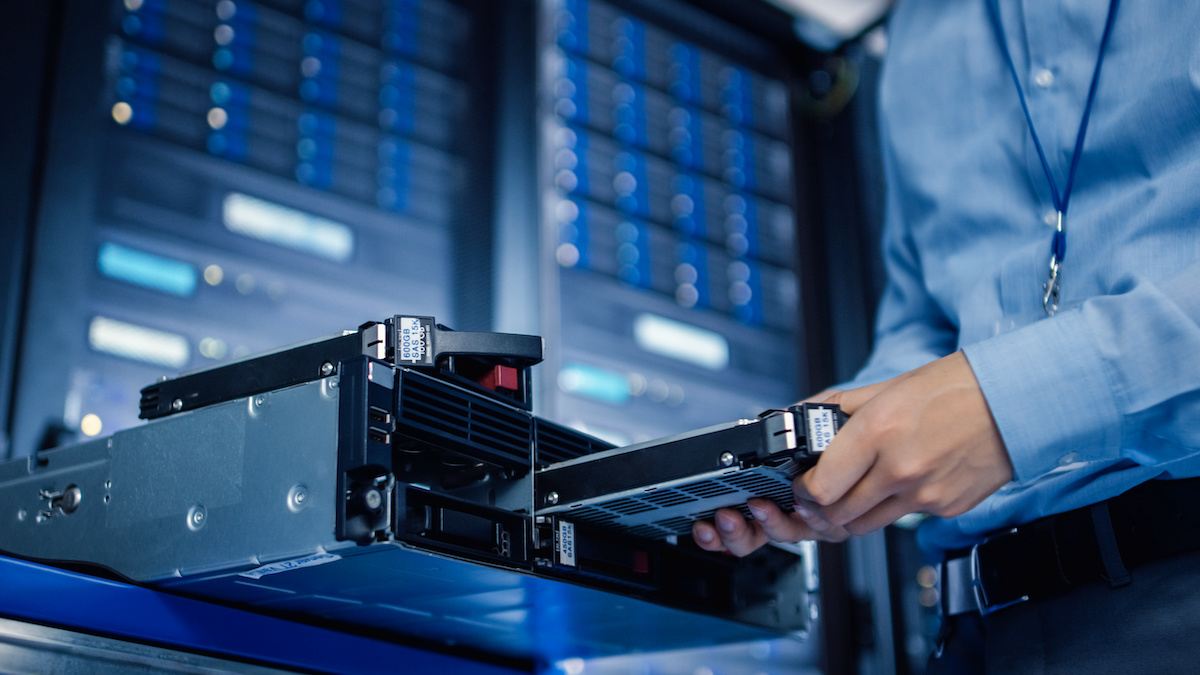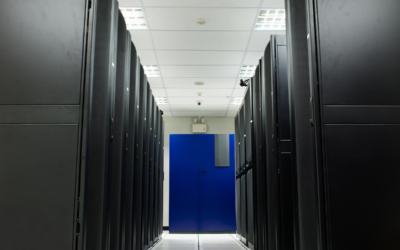7 Data Center Refresh Tips for 202118 min read

2020 was a year of disruption. The COVID-19 pandemic radically shifted how the world operates, from work environments to consumer behavior. Social distancing measures spurred rapid digitization, leading both consumers and businesses to generate more data than ever before. Data centers now face mounting pressure to update.
In 2020, the world generated more than 59 zettabytes of data, and this figure will likely continue to climb. Companies will still enable employees to work from home, and consumers will keep using online services for their convenience. The rise of internet traffic shows no signs of slowing, and data centers need to be ready for it.
Given these trends, 2021 is the ideal time to upgrade your data center. If you’re unsure where to start, consider these seven data center refresh steps.
1. Rethink Your Storage
Storage is perhaps the most immediately apparent area to upgrade and one of the most critical. With more traffic and data, you’ll need more storage space to collect and process it. Even if you have enough storage for your current traffic, it may become insufficient within a few years.
Your data center upgrades should keep the future in mind. Don’t expand according to anticipated traffic for the next year, but several years ahead. You don’t need to switch out all of your drives for larger ones at once but slowly expand with data’s exponential growth in mind.
Space isn’t the only storage factor you should consider, either. If you haven’t made the switch to SSDs yet, consider doing so now. These drives’ faster read and write times will help you process data quicker and are more cost-effective, making scaling up easier.
2. Update Security Infrastructure
As you address your data center equipment, keep security in mind. In 2020, 80.7% of organizations suffered at least one successful cyberattack, and 35.2% suffered six or more. As your data center processes more data, it becomes a more tempting target for hackers, too.
Before buying any new equipment, consider how it would fit into your security infrastructure. Is it compatible with your current system? Would it cause any significant disruptions to integrate into the network? If you will encounter potential issues, determine how you could handle them before making a purchase.
As you’re looking for upgrades, look for hardware or software that would help your cybersecurity. Anything that would improve your network uptime or provide reliable back-ups is ideal. When you implement your changes, make sure you don’t leave your network exposed in the process.
3. Fix Redundancies
One of the most common issues companies find when upgrading their data centers is redundancy. While you want to ensure some redundancy to mitigate any outages or losses, you may find that some of your servers are entirely unnecessary. These superfluous systems provide the ideal space for an upgrade.
If you find a redundant server, you don’t necessarily have to get rid of it. If possible, consider splitting redundant servers or moving them to the cloud entirely. Alternatively, you could split functions between them, using them for load balancing work from more critical systems.
Some redundancies may not be immediately obvious. If you run a comprehensive workload analysis, you may find some areas where you can consolidate tasks, highlighting redundancy. After consolidation, you’ll have leftover equipment to repurpose or eliminate.
4. Revisit Your Cabling
When most people think of data center upgrades, they typically think of equipment like storage and cooling solutions. Cables are often overlooked, but they’re a crucial part of any data center operation. Revisiting your data center cabling is a seemingly small change that can produce substantial results.
Since cables are so easy to overlook, you may be using outdated cabling solutions without realizing it. Remember that physical factors, not wire makeup, influence how these systems perform. For example, older fiber cables can’t tolerate bend radiuses in many modern data centers, limiting their utility.
Look for cables that offer both higher throughput and fit within your data center’s physical restraints. Something as seemingly insignificant as cable tie tightness can impact performance. If your ties are too tight, they could put pressure on the jacketing, changing the cable’s properties.
5. Upgrade Your Power Solutions
As you install new hardware, you’ll likely need new power solutions, too. At first, you may think that you’ll have to add more power to account for your increased storage, but that’s not necessarily true. Newer equipment is typically more energy-efficient, so more storage doesn’t directly correspond to more power consumption.
Your transformer is perhaps the most critical component of your power solution to upgrade. Even if your wattage is appropriate, the wrong kVA can damage your equipment, so you need the right transformer. Find your new equipment’s required input voltage and current flow to determine what size transformer you need.
Pay attention to your transformer’s cooling solution as well. Liquid-cooled transformers are typically more expensive and require more maintenance but are more efficient. Determine which is best for your current and upcoming needs before buying a new transformer.
In addition, consider upgrading your Power Distribution Units (PDUs). With new IT equipment, you’ll want to make sure they are reliably receiving the necessary power to operate. PDUs with greater receptacle density are also a good idea to support additional IT equipment both now and in the future.
6. Consider Updating Environmental Controls and Monitoring Capabilities
Another area to consider upgrading is your data center’s environmental controls. Better climate controls will help you ensure your equipment reaches its full potential. If your data center is too warm or humid, it’ll hinder your servers’ performance.
Look at the new equipment you’re considering to see if they have different climate needs in regards to heat and humidity (check both the manufacturer’s ratings as well as ASHRAE’s thermal guidelines to make sure you’re in compliance). IoT sensors can help you ensure that your environmental controls provide a suitable environment at all times.
In relation, investing in a monitoring/management solution to collect the data from IoT sensors and display the information in a digital twin format is becoming a necessity. With data centers adjusting to fewer on-site personnel, cloud-based solutions that allow operators to monitor and manage the power and cooling infrastructure remotely is an efficient alternative.
7. Repurpose Old Equipment
Finally, as you replace your old equipment, don’t discard it immediately. A troubling 37% of data centers use improper disposal methods for outdated equipment, like using a non-certified recycling company or throwing it away. Certified electronics recycling companies are the best option for disposal, but you may not need to dispose of your hardware at all.
See if there’s any way you can repurpose your old equipment. As you replace some servers with newer hardware, you can use the old systems as a backup or auxiliary server. Actions like this will help you be more cost-efficient with your upgrades.
Conclusion
The disruptions of 2020 make 2021 an ideal year for forward progress. Digitization is happening on an unprecedented scale, so your data center may become obsolete sooner than you’d expect. Take advantage of the year and upgrade your system, ensuring success in the future.
Real-time monitoring, data-driven optimization.
Immersive software, innovative sensors and expert thermal services to monitor,
manage, and maximize the power and cooling infrastructure for critical
data center environments.
Real-time monitoring, data-driven optimization.
Immersive software, innovative sensors and expert thermal services to monitor, manage, and maximize the power and cooling infrastructure for critical data center environments.

Devin Partida
Editor-in-Chief at ReHack
Devin Partida writes about data, cybersecurity and smart tech for ReHack.com, where she is also the Editor-in-Chief.







Those are some really helpful tips, Devin! Digitization is the future of data centers. You can invest in an efficient Data Center Infrastructure Management (DCIM) software and constantly monitor your facility. It allows early identification of problems and you can resolve them before they become more complex and expensive.